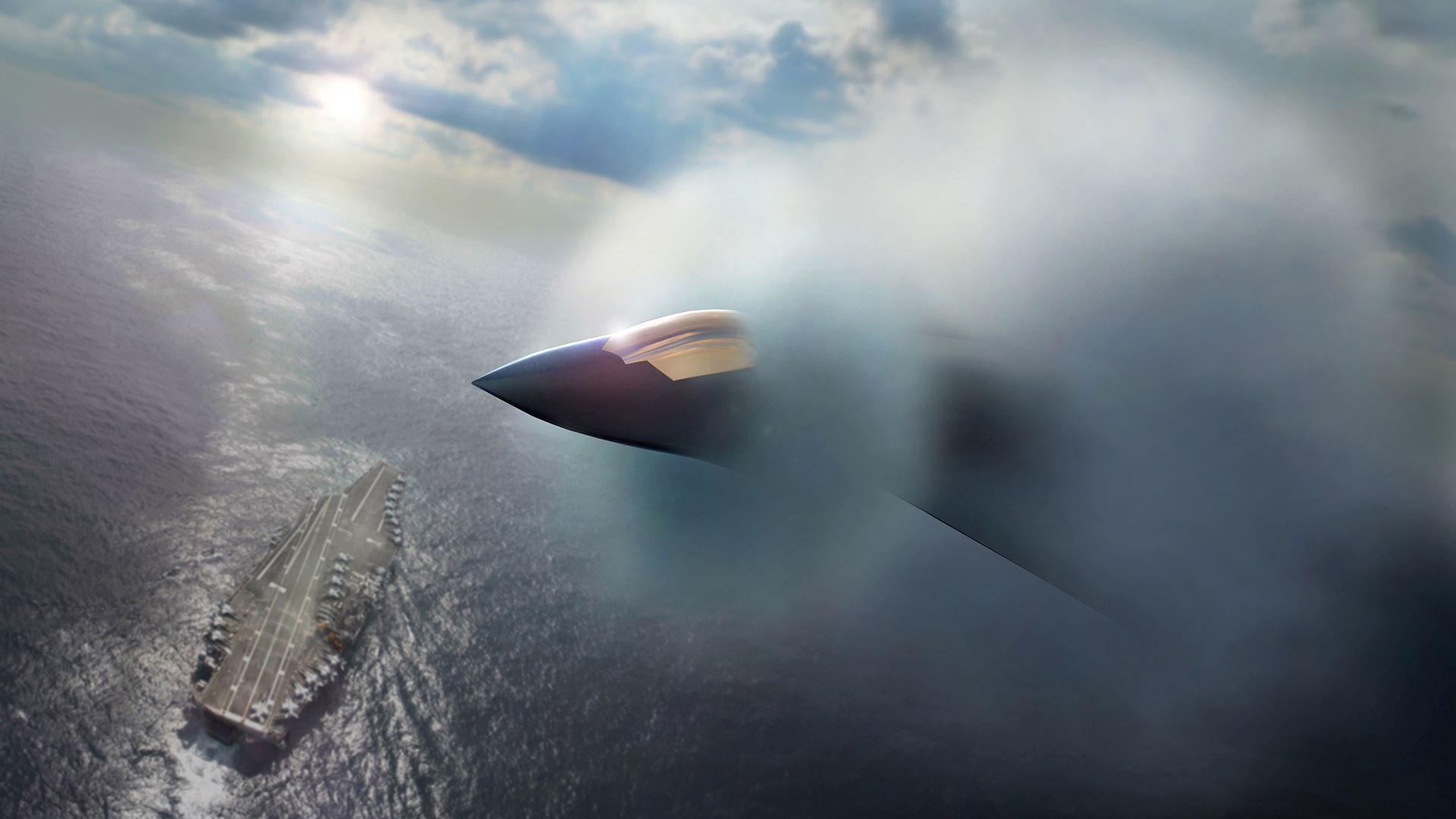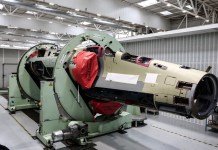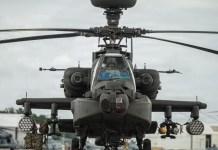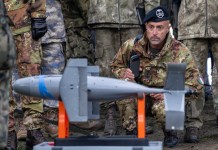The US Department of Defense (DoD) is poised to move ahead with the Navy’s next-generation fighter program amid speculations that the Pentagon was prioritizing the US Air Force’s F-47 fighter.
Citing U.S. officials familiar with the situation, Reuters reported that the program has received a green light from Defense Secretary Lloyd Austin, and the Pentagon could award the contract for the design and construction of the U.S. Navy’s F/A-XX next-generation carrier-based fighter.
Boeing and Northrop Grumman are known to be competing for the contract after Lockheed withdrew its bid from the contest in March 2025. Boeing won the Next Generation Air Dominance (NGAD) program of the US Air Force (USAF) after beating Lockheed Martin in March this year.
Meanwhile, Northrop Grumman exited the NGAD program in 2023 to concentrate on other projects, including the B-21 Raider stealth bomber and the F/A-XX. In fact, both contractors presented a conceptual rendering of the F/A-XX earlier this year.

The F/A-XX will replace the Boeing F/A-18E/F Super Hornets that have been in service with the US Navy since the 1990s.
According to one of the sources cited by Reuters, the US Navy could declare the winner of the contest as early as this week. However, the publication added a caveat that last-minute issues have slowed down the Navy jet’s progress in the past and may do so again.
The F/A-XX program’s progress has been hampered so far by budget disagreements between the Pentagon and the US Congress. Earlier, the Pentagon demanded $74 million to maintain the jet’s “minimal development funding.” However, some Pentagon officials stepped in to postpone the program for three years, citing issues with supply chains and engineering capabilities.
The Pentagon’s 2026 Fiscal Year budget proposal, unveiled in June, contained sufficient funds to complete preliminary development but lacked the additional dollars needed to begin purchasing the aircraft.
It seemed that the Pentagon wanted to prioritize the Air Force’s F-47 stealth fighter over the US Navy’s ambitions to construct its own next-generation jet, arguing that pursuing the two programs simultaneously could cause delays for both, as reported by Bloomberg.
“Simultaneously pursuing two sixth-generation fighters risks under-delivery on both,” the DoD reportedly told a House and Senate defense policy committee at the time. The Defense Department requested that the committee divert $500 million from the “accelerated development” of a Navy stealth fighter to the F-47. It argued that the F-47, “which has full presidential support,” should receive the additional $500 million instead of the US Navy.

“Given the schedule delays and cost growth across numerous airframes, DoD recommends a focus on the F-47, giving the Navy’s F/A-XX program time for technical maturity and development,” the Defense Department stated. “Phasing the F/A-XX after the Air Force’s initial F-47 development will alleviate capacity concerns in the industrial base.”
Nonetheless, the House Armed Services Committee remained unconvinced. Denying the request made by the Pentagon, the committee added the $500 million for the Navy’s F/A-XX in the $3.9 trillion package that was sent to the Senate.
The Senate Armed Services Committee, on June 3, unveiled its defense section of the tax, or reconciliation bill. It included $750 million to “accelerate the FA/XX aircraft.”
The Navy reportedly included the $1.4 billion amount in a request for more F/A-XX funds in its annual Unfunded Priority List (UPL) to Congress in July.
It is unclear what has changed since June that led the Defense Secretary to give the green light to the F/A-XX program. The Navy was earlier poised to award the contract in March, the same month when Trump awarded the F-47 contract to Boeing, which is set to become operational before the end of Donald Trump’s term in 2029.
Historically, the US Navy’s fighter jet program has trailed the USAF’s fighter program, as explained in detail earlier by the EurAsian Times.
For instance, the Navy’s F/A-18E/F Super Hornet faced delays in the 1990s due to budget constraints and debates over its effectiveness, with several members of Congress advising the upgrade of the Hornets instead.
A comparable multirole fighter of the USAF–the F-15E Strike Eagle–entered service in 1989. Meanwhile, the Super Hornet’s first flight was in 1995, and operational capability was achieved in 2001.
However, as the threat of a conflict with China in the Indo-Pacific looms large, the development of a next-generation F/A-XX, along with the USAF’s F-47 and the B-21 Raider strategic bomber, may seem like the only valid choice at this point.
The US Navy Needs F/A-XX
F/A-XX delays raise broader concerns about the future of naval aviation and the role of aircraft carriers in the fight against China. The Navy might not have a modern fighter that can operate from carriers in the 2030s and beyond if the program is delayed or denied funding, which could compromise the fleet’s capability to project power and maintain air superiority in a potential Indo-Pacific conflict.
The F/A-XX is anticipated to have enhanced endurance and range, enhanced stealth capabilities, and the capacity to interface with the Navy’s carrier-based air defense systems as well as uncrewed combat aircraft.
This would represent a significant advancement over the Super Hornets and the F-35C stealth fighters currently operated by the US Navy.
In June 2025, Rep. Ken Calvert, R-Calif, the head of the House Appropriations subcommittee on defense, said that “any hesitancy” to move forward with the Navy’s proposed F/A-XX program will leave the service “outmatched” in a future conflict with China. “We need sixth-generation fighters. The US Navy needs sixth-generation fighters. I’m concerned that any hesitancy on our part to proceed with the planned procurement of the sixth-gen fighters for the Navy will leave us dangerously outmatched in a China fight,” he said at a posture hearing.
“We cannot wait,” he added. “Further, we cannot expect to grow the defense industrial base by undermining it. Aviation programs that rely on highly specialized supply chains and skilled labor cannot be turned on and off like a switch.”

Pausing the program risks ceding advantages to adversaries, as highlighted by recent Chinese advancements in sixth-gen concepts.
As previously reported by the EurAsian Times, China is already flying two different prototypes of sixth-generation fighters: the J-36 and the J-50, one of which could have a carrier-based iteration. Moreover, reports indicate that China’s fifth-generation J-35 carrier-based stealth fighter has already entered production, further expanding its existing capability.
The Chinese People’s Liberation Army Navy (PLAN) is also set to induct the Fujian aircraft carrier into service before the end of this year.
The development of the F/A-XX would enable the US to stay one step ahead of an adversary with which it could potentially go to war in the next couple of years.
F/A-XX’s advanced stealth will allow the US Navy to operate in contested environments and evade China’s sophisticated anti-access/area-denial (A2/AD).
With a projected 25% greater range than the F-35C, F/A-XX can operate deeper into the Pacific, reducing reliance on vulnerable forward bases and enabling strikes against Chinese targets from stand-off distances. Moreover, the enhanced endurance of the aircraft would support prolonged missions, which are critical for maintaining a presence in vast operational theaters.
The F/A-XX is designed to operate as a “quarterback” for uncrewed collaborative combat aircraft (CCAs), like loyal wingman drones. This force multiplier capability would enable it to coordinate swarms of drones for reconnaissance, electronic warfare, or strike missions, thereby overwhelming China’s defenses and compensating for the limited size of its carrier air wings.
Equipped with next-generation sensors and data links, F/A-XX will enhance situational awareness, enabling real-time targeting and coordination with assets such as early warning aircraft, as well as aircraft carriers and surface ships. This will provide the US Navy with superior battlefield awareness.
China’s own sixth-gen fighter programs are expected to become operational by the mid-2030s. The accelerated development of the US Navy’s F/A-XX would essentially ensure the US Navy keeps pace, maintaining air superiority in contested skies where legacy platforms like the F/A-18 are outmatched.
- Contact the author at sakshi.tiwari13(at) outlook.com
- Follow EurAsian Times on Google News




